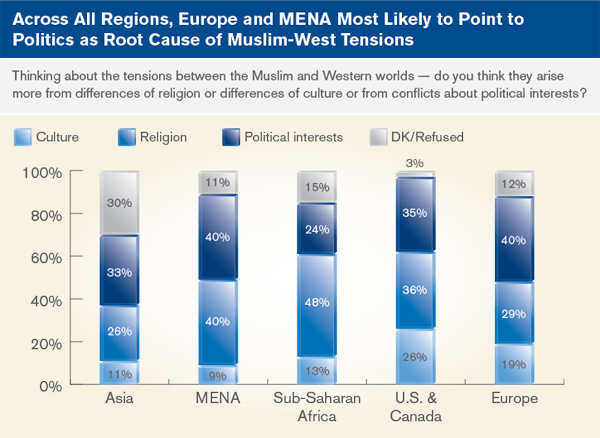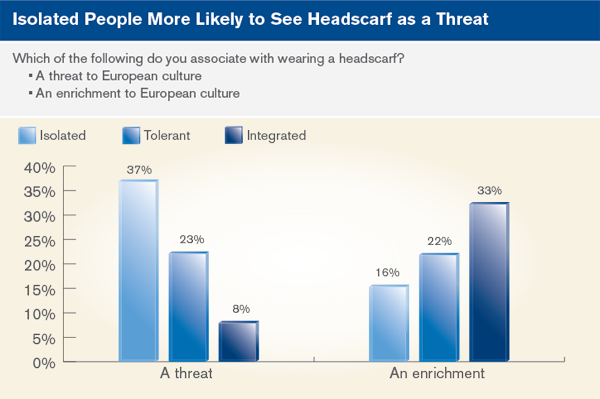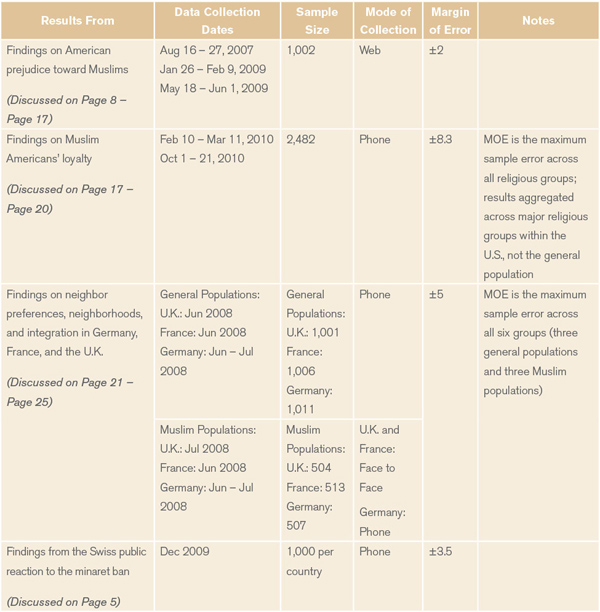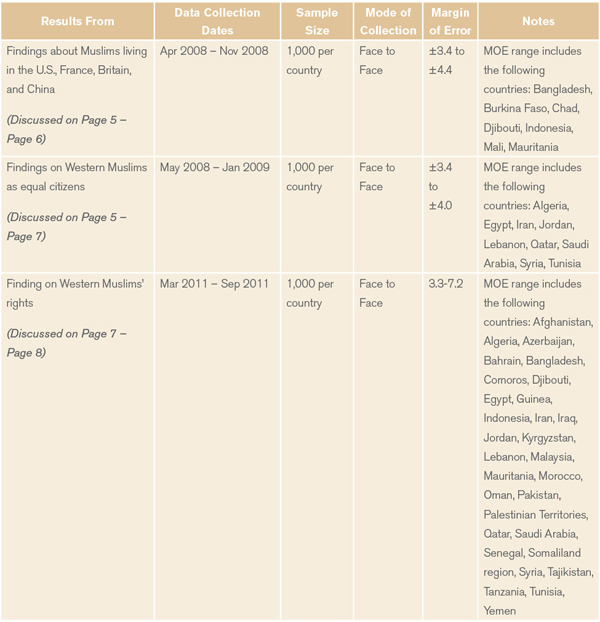Anti-Islamic sentiment or
Islamophobia is a term for
prejudice against, hatred towards, or fear of the religion of
Islam,
Muslims,
or of ethnic groups perceived to be Muslim. The term entered into
common English usage in 1997 with the publication of a report by the
Runnymede Trust condemning negative emotions such as fear, hatred, and
dread directed at Islam or Muslims. While the term is now widely
recognized and used, both the term and the underlying concept have been
criticized.
The causes and characteristics of Islamophobia are still debated. Some scholars have defined it as a type of
racism. Some commentators have posited an increase in Islamophobia resulting from the
September 11 attacks, while others have associated it with the increased presence of Muslims in
secular nations
Debate on the term and its limitations
At a 2009 symposium on "Islamophobia and Religious Discrimination", Robin Richardson, a former director of the Runnymede Trust
[9] and the editor of
Islamophobia: a challenge for us all,
[10]
said that "the disadvantages of the term Islamophobia are significant"
on seven different grounds, including that it implies it is merely a
"severe mental illness" affecting "only a tiny minority of people"; that
use of the term makes those to whom it is applied "defensive and
defiant" and absolves the user of "the responsibility of trying to
understand them" or trying to change their views; that it implies that
hostility to Muslims is divorced from factors such as skin color,
immigrant status, fear of fundamentalism, or political or economic
conflicts; that it conflates prejudice against Muslims in one's own
country with dislike of Muslims in countries with which the West is in
conflict; that it fails to distinguish between people who are against
all religion from people who dislike Islam specifically; and that the
actual issue being described is hostility to Muslims, "an
ethno-religious identity within European countries", rather than
hostility to Islam. Nonetheless, he argued that the term is here to
stay, and that it is important to define it precisely.
[11]
The exact definition of Islamophobia continues to be discussed with academics such as
Chris Allen saying it lacks a clear definition.
[12] Johannes Kandel,
in a 2006 comment wrote that Islamophobia "is a vague term which
encompasses every conceivable actual and imagined act of hostility
against Muslims", and proceeds to argue that five of the criteria put
forward by The Runnymede trust are invalid.
[13] In an article published in the June 2013 edition of
Standpoint,
Douglas Murray
argued that "the term 'Islamophobia' is so inexact that - in so far as
there is a definition - it includes insult of and even inquiry into any
aspect of Islam, including Muslim scripture."
[14]
When discrimination towards Muslims placed an emphasis on their
religious affiliation and adherence, it has been termed as Muslimphobia,
its alternative form of Muslimophobia,
[15] Islamophobism,
[16] antimuslimness and antimuslimism.
[17][18][19] Individuals who discriminate against Muslims in general have been termed
Islamophobes,
Islamophobists,
[20] anti-Muslimists,
[21] antimuslimists,
[22] anti-Muhammadan,
[23] Muslimphobes or its alternative spelling of
Muslimophobes,
[24] while individuals motivated by a specific anti-Muslim agenda or bigotry have been described as being
anti-mosque,
[25] anti-Shiites.
[26] (or
Shiaphobes[27]) and
anti-Sunni (or
Sunniphobes).
[28]
Fear
As opposed to being a psychological or individualistic phobia,
according to professor of religion Peter Gottschalk and Gabriel
Greenberg, "Islamophobia" connotes a
social anxiety about Islam and Muslims.
[29][30]
Some social scientists have adopted this definition and developed
instruments to measure Islamophobia in form of fearful attitudes
towards, and avoidance of, Muslims and Islam,
[31][32]
arguing that Islamophobia should "essentially be understood as an
affective part of social stigma towards Islam and Muslims, namely fear"
(p. 2).
[32]
Racism
Several scholars consider Islamophobia as a form of racism.
[33] A 2007 article in
Journal of Sociology defines Islamophobia as anti-Muslim racism and a continuation of anti-
Asian and
anti-Arab racism.
[34] Similarly,
John Denham has drawn parallels between modern Islamophobia and the
antisemitism of the 1930s,
[35] so have
Maud Olofsson,
[36] and
Jan Hjärpe, among others.
[33][37][38][39][40]
Others have questioned the supposed relationship between Islamophobia
and racism. Jocelyne Cesari writes that "academics are still debating
the legitimacy of the term and questioning how it differs from other
terms such as racism, anti-Islamism, anti-Muslimness, and
anti-Semitism."
[41][42]
Erdenir finds that "there is no consensus on the scope and content of
the term and its relationship with concepts such as racism ...”
[43] and Shryock, reviewing the use of the term across national boundaries, comes to the same conclusion.
[44]
On occasion race does come into play. Diane Frost defines Islamophobia
as anti-Muslim feeling and violence based on “race” and/or religion.
[45] Islamophobia may also target people who have Muslim names, or have a look that is associated with Muslims.
[46] According to Alan Johnson, Islamophobia sometimes can be nothing more than xenophobia or racism "wrapped in religious terms."
[47]
The European Commission against Racism and Intolerance (ECRI) defines
Islamophobia as the fear of or prejudiced viewpoint towards Islam,
Muslims and matters pertaining to them (ECRI 2006). Whether it takes the
shape of daily forms of racism and discrimination or more violent
forms, Islamophobia is a violation of human rights and a threat to
social cohesion".
[4]
It has also been defined as "fear of Muslims and Islam; rejection of
the Muslim religion; or a form of differentialist racism" (Helbling
2011).
[4]
Proposed alternatives
The concept of Islamophobia as formulated by Runnymede was also criticized by professor
Fred Halliday
on several levels. He writes that the target of hostility in the modern
era is not Islam and its tenets as much as it is Muslims, suggesting
that a more accurate term would be "Anti-Muslimism." He also states that
strains and types of prejudice against Islam and Muslims vary across
different nations and cultures, which is not recognized in the Runnymede
analysis, which was specifically about Muslims in Britain.
[48]
Poole responds that many Islamophobic discourses attack what they
perceive to be Islam's tenets, while Miles and Brown write that
Islamophobia is usually based upon negative stereotypes about Islam
which are then translated into attacks on Muslims. They also argue that
"the existence of different ‘Islamophobias’ does not invalidate the
concept of Islamophobia any more than the existence of different racisms
invalidates the concept of racism."
[49][50]
In a 2011 paper in
American Behavioral Scientist,
Erik Bleich stated "there is no widely accepted definition of
Islamophobia that permits systematic comparative and causal analysis",
[51] and advances "indiscriminate negative attitudes or emotions directed at Islam or Muslims" as a possible solution to this issue.
In order to differentiate between prejudiced views of Islam and
secularly motivated criticism of Islam, Roland Imhoff and Julia Recker
formulated the concept "Islamoprejudice", which they subsequently
operationalised in an experiment. The experiment showed that their
definition provided a tool for accurate differentiation.
[52]
Origins and causes
History of the term
One early use cited as the term's first use is by the painter
Alphonse Étienne Dinet and
Algerian intellectual Sliman ben Ibrahim in their 1918 biography of Islam's prophet
Muhammad.
[53][54] Writing in French, they used the term
islamophobie.
Robin Richardson writes that in the English version of the book the
word was not translated as "Islamophobia" but rather as "feelings
inimical to Islam". Dahou Ezzerhouni has cited several other uses in
French as early as 1910, and from 1912 to 1918.
[55] These early uses of the term did not, according to
Christopher Allen,
have the same meaning as in contemporary usage, as they described a
fear of Islam by liberal Muslims and Muslim feminists, rather than a
fear or dislike/hatred of Muslims by non-Muslims.
[54][56]
On the other hand, Fernando Bravo Lopez argues that Dinet and ibn
Sliman's use of the term was as a criticism of overly hostile attitudes
to Islam by a Belgian orientalist, Henri Lammens, whose project they saw
as a "'pseudo-scientific crusade in the hope of bringing Islam down
once and for all.'" He also notes that an early definition of
Islamophobia appears in the Ph.D. thesis of Alain Quellien, a French
colonial bureaucrat:
For some, the Muslim is the natural and irreconcilable enemy of the
Christian and the European; Islam is the negation of civilization, and
barbarism, bad faith and cruelty are the best one can expect from the
Mohammedans.
Furthermore, he notes that Quellien's work draws heavily on the work
of the French colonial department's 1902-06 administrator, who published
a work in 1906, which to a great extent mirrors
John Esposito's
The Islamic Threat: Myth or Reality?.
[57]
The first recorded use of the term in English, according to the
Oxford English Dictionary, was in 1923 in an article in
The Journal of Theological Studies.
[3] The term entered into common usage with the publication of the Runnymede Trust's report in 1997.
[58]
Kofi Annan asserted at a 2004 conference entitled "Confronting
Islamophobia" that the word Islamophobia had to be coined in order to
"take account of increasingly widespread bigotry".
[59]
Contrasting views on Islam
The Runnymede report contrasted "open" and "closed" views of Islam,
and stated that the following eight "closed" views are equated with
Islamophobia:
-
- Islam is seen as a monolithic bloc, static and unresponsive to change.
- It is seen as separate and "other." It does not have values in
common with other cultures, is not affected by them and does not
influence them.
- It is seen as inferior to the West. It is seen as barbaric, irrational, primitive, and sexist.
- It is seen as violent, aggressive, threatening, supportive of terrorism, and engaged in a clash of civilizations.
- It is seen as a political ideology, used for political or military advantage.
- Criticisms made of "the West" by Muslims are rejected out of hand.
- Hostility towards Islam is used to justify discriminatory practices
towards Muslims and exclusion of Muslims from mainstream society.
- Anti-Muslim hostility is seen as natural and normal.[60]
These "closed" views are contrasted, in the report, with "open" views
on Islam which, while founded on respect for Islam, permit legitimate
disagreement, dialogue and critique.
[61]
According to Benn and Jawad, The Runnymede Trust notes that anti-Muslim
discourse is increasingly seen as respectable, providing examples on
how hostility towards Islam and Muslims is accepted as normal, even
among those who may actively challenge other prevalent forms of
discrimination.
[62]
Identity politics
It has been suggested that Islamophobia is closely related to
identity politics,
and gives its adherents the perceived benefit of constructing their
identity in opposition to a negative, essentialized image of Muslims.
This occurs in the form of self-righteousness, assignment of blame and
key identity markers.
[63] Davina Bhandar writes that:
[64]
[...] the term ‘cultural’ has become synonymous with the category of
the ethnic or minority (...). It views culture as an entity that is
highly abstracted from the practices of daily life and therefore
represents the illusion that there exists a spirit of the people. This
formulation leads to the homogenisation of cultural identity and the
ascription of particular values and proclivities onto minority cultural
groups.
She views this as an
ontological
trap that hinders the perception of culture as something "materially
situated in the living practices of the everyday, situated in time-space
and not based in abstract projections of what constitutes either a
particular tradition or culture."
In some societies, Islamophobia has materialized due to the portrayal of Islam and Muslims as the national "
Other",
where exclusion and discrimination occurs on the basis of their
religion and civilization which differs with national tradition and
identity. Examples include Pakistani and Algerian migrants in Britain
and France respectively.
[65][66] This sentiment, according to Malcolm Brown and Robert Miles, significantly interacts with
racism, although Islamophobia itself is not racism.
[67] Author
Doug Saunders has drawn parallels between Islamophobia in the United States and its older
discrimination and hate against
Roman Catholics,
saying that Catholicism was seen as backwards and imperial, while
Catholic immigrants had poorer education and some were responsible for
crime and terrorism.
[68][69][70][70][46]
Brown and Miles write that another feature of Islamophobic discourse
is to amalgamate nationality (e.g. Arab), religion (Islam), and politics
(terrorism, fundamentalism) — while most other religions are not
associated with terrorism, or even "ethnic or national distinctiveness."
[66]
They feel that "many of the stereotypes and misinformation that
contribute to the articulation of Islamophobia are rooted in a
particular perception of Islam", such as the notion that Islam promotes
terrorism — especially prevalent after the
September 11, 2001 attacks.
[71]
The two-way stereotyping resulting from Islamophobia has in some
instances resulted in mainstreaming of earlier controversial discourses,
such as liberal attitudes towards gender equality
[63][64] and homosexuals.
[72] Christina Ho has warned against framing of such mainstreaming of gender equality in a
colonial,
paternal discourse, arguing that this may undermine minority women's ability to speak out about their concerns.
[73]
Links to ideologies
Senior scientist at
the Norwegian Center for Studies of Holocaust and Religious Minorities,
Cora Alexa Døving, argues that there are significant similarities
between Islamophobic discourse and European pre-Nazi antisemitism.
[63]
Among the concerns are imagined threats of minority growth and
domination, threats to traditional institutions and customs, skepticism
of integration, threats to secularism, fears of sexual crimes, fears of
misogyny, fears based on historical cultural inferiority, hostility to
modern Western Enlightenment values, etc.
Matti Bunzl
has argued that there are important differences between Islamophobia
and antisemitism. While antisemitism was a phenomenon closely connected
to European
nation-building processes, he sees Islamophobia as having the concern of European civilization as its focal point.
[74] Døving, on the other hand, maintains that, at least in Norway, the Islamophobic discourse has a clear national element.
[63]
In a reply to Bunzl, French scholar of Jewish history, Esther Benbassa,
agrees with him in that he draws a clear connection between modern
hostile and essentializing sentiments towards Muslims and historical
antisemitism. However, she argues against the use of the term
Islamophobia, since, in her opinion, it attracts unwarranted attention to an underlying racist current.
[75]
The head of the Media Responsibility Institute in
Erlangen,
Sabine Schiffer, and researcher Constantin Wagner, who also define
Islamophobia as anti-Muslim racism, outline additional similarities and
differences between Islamophobia and antisemitism.
[76]
They point out the existence of equivalent notions such as
"Judaisation/Islamisation", and metaphors such as "a state within a
state" are used in relation to both Jews and Muslims. In addition, both
discourses make use of, among other rhetorical instruments, "religious
imperatives" supposedly "proven" by religious sources, and conspiracy
theories.
The differences between Islamophobia and antisemitism consist of the
nature of the perceived threats to the "Christian West". Muslims are
perceived as "inferior" and as a visible "external threat", while on the
other hand, Jews are perceived as "omnipotent" and as an invisible
"internal threat". However, Schiffer and Wagner also note that there is a
growing tendency to view Muslims as a privileged group that constitute
an "internal threat", and that this convergence between the two
discources makes "it more and more necessary to use findings from the
study of anti-Semitism to analyse Islamophobia". Schiffer and Wagner
conclude,
The achievement in the study of anti-Semitism of examining Jewry and
anti-Semitism separately must also be transferred to other racisms, such
as Islamophobia. We do not need more information about Islam, but more
information about the making of racist stereotypes in general.
The publication
Social Work and Minorities: European Perspectives describes Islamophobia as the new form of racism in Europe,
[77] arguing that "Islamophobia is as much a form of racism as
anti-semitism, a term more commonly encountered in Europe as a sibling of racism, xenophobia and Intolerance."
[78] Edward Said considers Islamophobia as it is evinced in
Orientalism to be a trend in a more general antisemitic Western tradition.
[79][80] Other note that there have been a transition from anti-Asian and anti-Arab racism to anti-Muslim racism,
[81] while some note a racialization of religion.
[82]
According to a 2012 report by a UK anti-racism group,
counter-jihadist
outfits in Europe and North America are becoming more cohesive by
forging alliances, with 190 groups now identified as promoting an
Islamophobic agenda.
[83] In
Islamophobia and its consequences on young people
(p. 6) Ingrid Ramberg writes "Whether it takes the shape of daily forms
of racism and discrimination or more violent forms, Islamophobia is a
violation of human rights and a threat to social cohesion.". Professor
John Esposito of
Georgetown University calls Islamophobia "the new anti-Semitism".
[37]
Mohamed Nimer
compares Islamophobia with anti-Americanism. He argues that while both
Islam and America can be subject to legitimate criticisms without
detesting a people as a whole, bigotry against both are on the rise.
[84]
Multiculturalism
According to Gabrielle Maranci, the increasing Islamophobia in the West is related to a rising repudiation of
multiculturalism.
Islam is widely regarded as the most resistant culture against Western,
democratic values and its Judaeo-Christian heritage. Maranci concludes
that "Islamophobia is a ‘phobia’ of multiculturalism and the
transruptive effect that Islam can have in Europe and the West through
transcultural processes."
[85]
Islamophobia: Understanding Anti-Muslim Sentiment in the West
Researchers and policy groups define Islamophobia in differing
detail, but the term's essence is essentially the same, no matter the
source:
An exaggerated fear, hatred, and hostility toward Islam and Muslims
that is perpetuated by negative stereotypes resulting in bias,
discrimination, and the marginalization and exclusion of Muslims from
social, political, and civic life.
[1]
Islamophobia existed in premise before the terrorist attacks of
September 11, 2001, but it increased in frequency and notoriety during
the past decade. The Runnymede Trust in the U.K., for example,
identified eight components of Islamophobia in a 1997 report, and then
produced a follow-up report in 2004 after 9/11 and the initial years of
the Afghanistan and Iraq wars. The second report found the aftermath of
the terrorist attacks had made life more difficult for British Muslims.
In a 2011 meeting, the United Nations Alliance of Civilizations, as
well as the League of Arab States, a key partner, identified
Islamophobia as an important area of concern. Gallup developed a
specific set of analyses, based on measurement of public opinions of
majority and minority groups in multiple countries, to guide
policymakers in their efforts to address the global issue of
Islamophobia.
Research shows that the U.S. identified more than 160 Muslim-American
terrorist suspects and perpetrators in the decade since 9/11, just a
percentage of the thousands of acts of violence that occur in the United
States each year. It is from this overall collection of violence that
"an efficient system of government prosecution and media coverage brings
Muslim-American terrorism suspects to national attention, creating the
impression - perhaps unintentionally - that Muslim-American terrorism is
more prevalent than it really is." Never mind that since 9/11, the
Muslim-American community has helped security and law enforcement
officials prevent nearly two of every five al Qaeda terrorist plots
threatening the United States
[2] and that tips
from the Muslim-American community are the largest single source of
initial information to authorities about these few plots.
[3]
Islamophobia affects more than a small fringe group of Muslims.
Through various research vehicles and global polling efforts, Gallup has
collected a wealth of data detailing public opinion about various
aspects of respect, treatment, and tolerance relative to Muslims
worldwide. This brief serves as a snapshot of opinion and thought
displayed by people from multiple countries, regions, and communities -
findings that chronicle perceptions associated with Islamophobia
globally.
Several elements can affect the interactions and degree of respect
between Muslim and Western societies. Differences in culture, religion,
and political interests may shape one population's opinion toward the
other. Definitions of Islamophobia tend to attribute fear or hatred of
Muslims to their politics or culture, and to Islam and the religiosity
of Muslims.
When asked where they think tensions between the Muslim and Western
worlds originate, answers vary. Those in Middle East and North Africa
(MENA) nations and in the U.S. and Canada equally cite religion and
political interests as the primary cause of tensions. Sub-Saharan
Africans more often cite religion than politics, while Europeans say
political interests are the driving force behind Muslim-West tensions.

Data reported from 2008
[6]
Religion and culture outpace politics across all regions surveyed as
the root cause of tension between Muslim and Western worlds. This is
significant in discussions about Islamophobia, considering political
interests can vary and change while cultural and religious differences
are more ingrained within populations.
Recent examples of Islamophobia exist within several countries. In
late 2009, the largest party in the Swiss parliament put to referendum a
ban on minaret construction. The government opposed the ban, citing
harm to the country's image - and particularly Muslims' views of
Switzerland. Nearly 60% of Swiss voters and 22 out of 26 voting
districts voted in favor of the ban, leading to cries of Islamophobia by
leaders in countries such as Pakistan and organizations such as the
United Nations.
In the month following the referendum, Gallup asked a representative
sample of Swiss adults a series of questions about the issue
specifically and Muslim rights in general. Most Swiss say that religious
freedom is important for Swiss identity. About one-third agree that
there is an irresolvable contradiction between liberal democracy and
Islam. However, the Swiss are more likely to disagree (48%) than agree
(38%) with that statement. Rather, 84% say it is possible for a Muslim
to be a good Swiss patriot. When asked if those in the Swiss Muslim
community have reason to believe they have been discriminated against in
the wake of the minaret ban, two-thirds (68%) say no. Furthermore, most
Swiss say they do not believe that the recent belief that Switzerland
was being seen as willing to infringe on the rights of its Muslim
minority in the wake of the referendum on minarets has harmed
Switzerland's reputation in the international community.
Despite a very public debate on the banning of a religious symbol of
Islam, much of the Swiss population did not believe that the Swiss
Muslim community should feel discriminated against.
In 2008, Gallup asked representative samples from a subset of
majority-Muslim countries about public perceptions of fair treatment of
Muslims in the U.S., France, Britain, and China. While about one-third
of this subset say that Muslims living in each of those countries are
treated as equal citizens regarding their rights and freedoms, about
one-quarter of respondents say these Muslims are not. About 40% of this
subset of majority-Muslim countries say they don't know how these four
countries treat their Muslim residents. The notion that Muslims in these
countries are treated unfairly supports the idea that Muslims in
general believe that unfair treatment of Muslims - a component of
Islamophobia - does exist in Western societies.
......to be continued
 Data reported from 2008
Data reported from 2008 Data reported from 2008
Data reported from 2008 Data reported from 2008
Data reported from 2008

 Data reported from 2008[6]
Data reported from 2008[6]